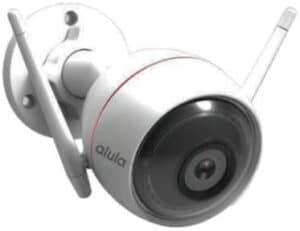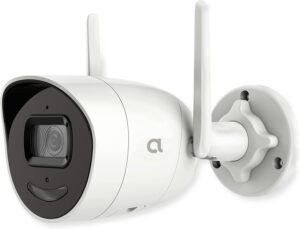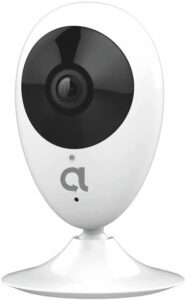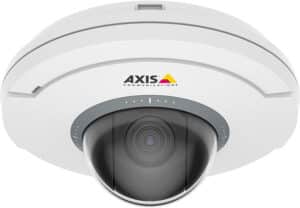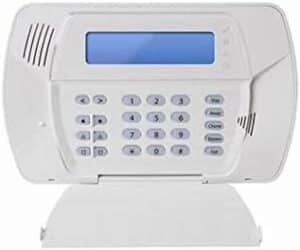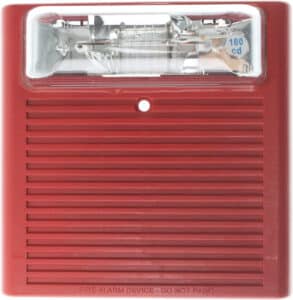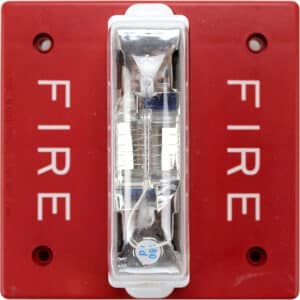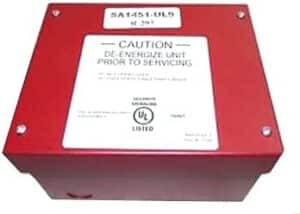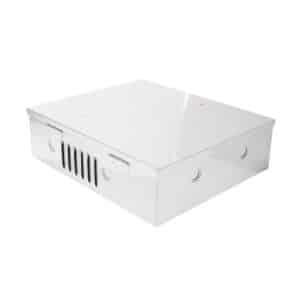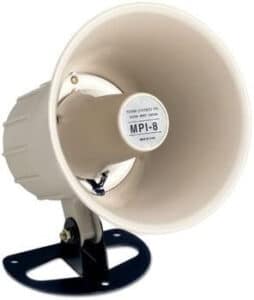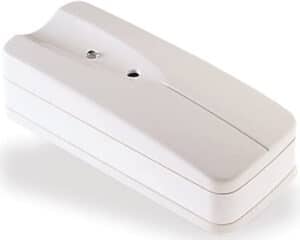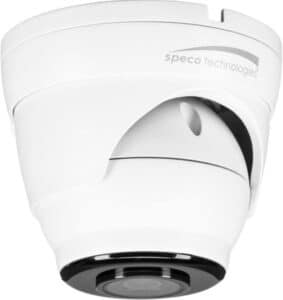How to Choose a Security Camera System for Your Home
Are you tired of feeling vulnerable in your own home? Have you been considering investing in a security camera system but don’t know where to start? With so many options available, choosing the right system for your home can be overwhelming. But don’t worry, we’ve got you covered.
In this comprehensive guide, we’ll walk you through everything you need to know to make an informed decision. From indoor and outdoor cameras, wired to wireless options, and local to cloud video storage solutions, we’ll cover it all. Keep reading to discover how to choose a security camera system for your home that will give you the peace of mind you deserve.
Table of Contents
Understanding the Basics: A Guide to Choosing the Right Home Security Camera System
Choosing the right home security camera system can be overwhelming. There are various factors to consider and a range of options to choose from that cater to different needs. This guide aims to help you understand the basics of home security cameras and make an informed decision upon choosing the right security camera system for your home.
First and foremost, you need to consider the type of security camera that you need for your home. Outdoor cameras are ideal for monitoring the exterior of your property, while indoor cameras are perfect for monitoring the inside of your house. Wireless cameras are becoming increasingly popular due to the lack of wires and the ability to position them virtually anywhere. Hardwired cameras, on the other hand, can offer a more stable and reliable connection.
Another important factor to consider is the level of monitoring that your security camera system can provide. Some cameras offer professional monitoring, which means that a monitoring company is alerted when unusual activity is detected. Others allow for local storage, where footage is stored on a micro SD card or hard drive. Cloud storage is also a popular option where the footage is stored on a remote server accessed through an internet connection.
Moreover, it is essential to consider the features of the cameras that you are interested in. Features such as night vision and color night vision can increase the security of your home during lower light conditions. A two-way audio system can allow you to communicate with people outside of your house from inside, which can add an extra layer of security. Video doorbells provide added security as they can be used to screen visitors without opening the door.
Lastly, it is important to consider the setup and installation of your security camera system. Professional installation can ensure that the camera is placed in the most strategic position and that the setup of the system is configured correctly. However, some systems can be self-installed and offer user-friendly interfaces for ease of use.
Overall, understanding the basics of home security cameras and knowing what to look for in a security camera system can make a significant impact on the safety and security of your home. Take the time to research the different types of security cameras and suppliers, and make an informed decision based on your unique security requirements.
Wireless vs. Wired: Which Security Camera System is Right for Your Home?
Security camera systems are a necessity that can help homeowners stay protected. But, with so many options available, it can be difficult to find one that perfectly suits your needs.
For instance, some cameras need to be hardwired into your home’s electrical system, while wireless security cameras can be moved around on a whim. Both types of security cameras have their advantages and disadvantages, and it’s important to carefully consider each of these differences before deciding which type of security camera is right for you.
Wireless security camera features
Wireless security cameras can be moved to different areas on a whim, so they’re a great option if your home’s layout changes often. Plus, they’re often more affordable than hardwired security cameras. However, wireless security cameras do have a few potential drawbacks. First, you have to mount them somewhere, which isn’t always possible. Second, they rely on battery power, so if your device runs out, the camera will cease recording.
Wired security camera features
Wired security cameras are more secure than wireless cameras. A hardwired security system isn’t reliant on batteries, which means it’ll continue to record even when the power goes out. Plus, you don’t have to think about where to position them since they’re hardwired into the electrical system. However, hardwired security cameras are more expensive than their wireless counterparts. While a wireless camera can cost as little as $50, a hardwired camera could cost up to $200.
Outdoor Security Cameras: A Detailed Overview to Choose The Best for Your Home
Outdoor security cameras are a crucial part of home security. They provide a variety of benefits, including remote monitoring, which is perfect for homeowners who travel frequently. However, there are a variety of outdoor security cameras on the market that make finding one for your home challenging. Unfortunately, many security cameras don’t work as well as others, and many are too bulky, expensive, or have limited viewing angles.
To find the right outdoor security camera for your home, you should consider the following factors:
-
Water-resistance: Many outdoor security cameras are extremely waterproof, but not all of them can function when submerged in water. For outdoor security cameras that face the swimming pool or backyard, you should ensure that the camera is waterproof.
-
Home automation: Cameras that can integrate with other smart home products will allow you to control your home security system via your smartphone or tablet.
-
Night vision: Cameras with night vision allow you to see your home 24 hours
-
Remote viewing: Cameras with remote viewing allow you to monitor your home, even when you’re away from your home. This allows homeowners to watch their home at any time, from anywhere.
-
Noise level: Some outdoor cameras make a lot of noise, making it difficult to sleep.
-
Audio monitoring: Some outdoor security cameras come with microphones that can allow you to listen in on what’s happening in your home while you’re away.
-
SD Card Recording: Some outdoor security cameras allow you to save your footage to an SD card. These cameras typically record to an SD card, and then the footage is uploaded to a cloud server, allowing you to view the footage remotely.
-
Motion detection: Cameras with motion detection allow you to only record footage when there are people or objects moving in your field of vision.
-
Wireless: Cameras with wireless capabilities allow you to easily install the camera around your home, avoiding costly installation fees.
-
Remote alerts: Cameras with remote alerts can be set to send you notifications when certain events occur, such as when the camera detects movement.
-
Cloud storage: Cameras with cloud storage allow you to save footage and access it remotely.
Top 3 Best Night Vision Security Cameras for Ultimate Home Security
Night vision security cameras should be the first thing you go look for when looking for the ideal indoor security camera. Unfortunately, many indoor security cameras come with LED lights that spoil the name and purpose of night vision.
Thus, when choosing a night vision security camera for your home, it is wise to first understand the difference between LED lights and infrared (IR) LEDs.
Infrared (IR) LEDs
Infrared LEDs produce light by converting electricity into infrared light, which is then transmitted to the subject you are recording. Infrared LEDs are invisible to the human eye and are often used in cameras, night vision goggles, and night vision scopes. The sound wave produced by these IR LEDs is also undetectable to us.
LED Lights
LED lights on the other hand are recognizable by the human eye. They are often found in the form of flashlights or LEDs used for decoration. LEDs convert electricity into light, which is visible to the human eye. LED lights are often used in indoor security cameras and night vision goggles. The light wave produced by LED lights is also noticeable to us.
The difference between the two can be seen by experimenting with LEDs and IR LEDs. Hold up a torch that is fitted with an IR LED and point it toward your face. You will notice that the light does not illuminate your face, which is similar to the light produced by a night vision camera. However, hold the same torch up to your face using LED lights. You will notice that light is emitted, which is similar to that of an LED flashlight.
Thus, the prime difference between IR LEDs and LED lights is the space the light travels. Infrared LEDs convert electricity into light, which travels in a much narrower space. LED lights on the other hand convert electricity into light, which travels in a much wider space. Infrared LEDs produce light more commonly used in night vision cameras. LED lights are used for everyday purposes, such as LED light bulbs and LED flashlights.
IR LEDs produce light more efficiently than LED lights. LED lights produce more light than what is needed for night vision. IR LEDs also produce less sound than LED lights. LED flashlights and LED lightbulbs can produce a clicking noise when they are switched on. This noise often scares intruders away. However, LED lights are just as effective when recording an image.
Top 3 Best Night Vision Cameras:
-
Alula CAM-OD-HS2-AI Outdoor Bullet Camera, White, 1080P HD Video, 90 Foot Night Vision, Two Way Audio, 2MP Image Sensor, Motion
-
Alula RE701 Outdoor Network 2mp Bullet Security Camera (for Connect+ Panel) RJ45
-
Alula RE700 Indoor Mini Security Camera
Professional Monitoring vs. DIY Security Camera Systems: Which One is the Better Investment?
When it comes to choosing a security camera system for your home, two main options usually come up: professional monitoring or DIY systems. The decision can be challenging since each option has its benefits and drawbacks. Professional monitoring usually involves a monthly or yearly fee and offers 24/7 surveillance and immediate emergency response. On the other hand, DIY security camera systems allow homeowners to install and monitor the cameras themselves without any additional fees. While both options have their benefits, one may be a better investment for you depending on your home security needs.
Choosing a professional monitoring system is undoubtedly a significant investment for homeowners. For those who prioritize security above all else, professional monitoring offers the peace of mind of knowing that someone is always watching your home. Many professional systems come equipped with the latest technology and features, such as color night vision, two-way audio, and outdoor cameras that can withstand harsh weather conditions. While most security cameras offer some of these features, professional monitoring systems are typically more advanced, providing a superior level of protection for your home.
On the other hand, DIY security camera systems offer homeowners the freedom to manage their home security independently. With more affordable options on the market, homeowners can purchase most security cameras and install them themselves with ease, often without any added fees or contracts. Another advantage of DIY systems is that they allow for local storage of video footage, eliminating the need to rely on an internet connection or cloud storage. Outdoor cameras are perfect for homeowners who want to keep an eye on their property without the added expense of a professional monitoring system.
Security Camera Features to Look For: A Guide to Choosing the Right Home Security System
Choosing the right home security system can be an overwhelming task, especially if you don’t know what to look for. One of the most important things to consider is the security camera features. The features of the cameras that you choose can significantly impact the quality of the video and the overall performance of the system.
One of the key features to look for in a security camera system is a smart security camera. These cameras use advanced technology to provide enhanced security features, such as motion detection, facial recognition, and even voice control. These features allow for seamless and intuitive control of your security system, making it easier to monitor your home and keep your family safe.
Another important factor to consider is video quality. The quality of your security camera footage is essential for the accurate identification of potential intruders and events. High-definition cameras provide better image quality and allow for easy recognition of faces and license plates. When choosing a security camera system, make sure to choose one with high-quality video capabilities to ensure that you can capture all necessary details in the event of an incident.
Video storage is another critical feature to consider. The amount of video storage that your security camera system offers will determine how much footage you can capture before the system overwrites old footage. Make sure that you choose security systems that provide enough storage for your needs. Some systems also allow for the ability to store footage on a local hard drive or in the cloud, which provides added protection and the ability to access footage from anywhere.
Camera Lens is another important factor. The camera lens determines the field of view, which is the area that the camera can observe. A wide-angle lens offers a wider field of view, allowing you to capture more of the area surrounding the camera. A narrow-angle lens offers a tighter field of view, allowing you to focus on specific areas.
When choosing a security camera system, it is also important to consider how many cameras you will need. This is dependent on the size of your home and the areas that you want to monitor. By having multiple cameras strategically placed around your home, you can improve the overall security of your home and quickly identify any suspicious activity.
Indoor vs. Outdoor Cameras: Which Ones Do You Need for Your Home Security?
When it comes to home security, you have two basic options: indoor cameras and outdoor cameras. Which you choose will depend on a number of factors, including where you want to place cameras, your budget, and how much coverage you need.
-
Indoor camera: Indoor cameras can be placed anywhere inside your home, such as near a front door or in your living room, and are typically connected to a network (Wi-Fi or wireless) that you can access from wherever you are. Many indoor cameras use a form of cloud storage, where any footage is saved to remote servers rather than to a local hard drive.
-
Outdoor camera: Outdoor cameras, or security cameras, are most often placed outdoors, near a front door or a backyard. Outdoor security cameras are most often connected to a network (Wi-Fi or wireless) that you can access from wherever you are. Some outdoor security cameras use a form of cloud storage, where any footage is saved to remote servers rather than to a local hard drive.
The best option for you will depend on where you want to place the cameras, your budget, and the coverage you need. If you are looking for a basic system that just includes a few cameras, then a more affordable solution may be best. If you are looking for more coverage, then a higher-end system with more cameras may be the way to go.
Evaluating Storage Options: Choosing the Best Video Storage for Your Home Security Camera System
A camera is one of the most powerful tools you can use to protect your home. Not only do the cameras log footage, but they act as a visible deterrent to would-be intruders, who know that security cameras mean trouble. That’s why it’s important to make sure you choose the correct video storage for your security camera system.
While the hardware you install is important, the route you store, access, and retrieve footage will also play a role in how secure your home and family are. Here are a few things to keep in mind:
-
Storage Capacity: Depending on the size of your home and the number of cameras you plan to install, you’ll need to decide on the storage capacity you need. Some systems come with a built-in hard drive, while others offer cloud storage or a combination of the two.
-
Accessibility: Consider how easy it is to access footage from your security camera system. Some systems provide an app that allows you to view footage from almost any device, while others are more limited.
-
Data Security: If you’re using a cloud-based storage system, make sure it offers strong encryption to protect your footage from hackers. You should also look for systems that have access control features, such as two-factor authentication, to further secure your footage.
Conclusion
As we discussed, choosing the right security camera system for your home can be a daunting task. From choosing the best camera type to deciding on the right number of cameras, there is much to consider. With the right information, however, you can make an informed decision that will keep your home safe and secure.
At Xcessory Zone, we specialize in providing DIY home security products that are easy to install and use. With our wide selection of cameras and systems, you can choose the perfect solution for your home. Check out our website today and get the peace of mind that comes with having a reliable home security system.
Take the first step in protecting your home and family by choosing Xcessory Zone to provide your security camera system. Don’t wait—start browsing our products today and find the perfect system for your home.
FAQs
How do I choose a security camera system for my home?
Security camera systems can provide extra peace of mind and protection for your home and are available in a variety of different models. Consider what type of security you need and the features that come with each type of system. Popular security cameras include video doorbell cameras or Ring cameras, A Ring Stick Up Cam, and outdoor home security cameras. Depending on your needs and budget, you can choose the type of security camera system that best fits your needs.
How many security cameras do I need for my home?
The number of security cameras needed for your home will depend on the size of your home and the level of security desired. Generally, it is recommended to have at least one security camera in each entryway and a visible outdoor area. Depending on the size of your home, you may need to add extra cameras to ensure that all areas are covered.
What are the best outdoor home security cameras?
The best outdoor home security cameras are those that are waterproof, weatherproof, and offer motion detection. Additionally, look for a camera that has a wide field of view and night vision capabilities. Popular outdoor cameras include Ring Stick Up Cams, Arlo Pro 3, and Nest Cam IQ Outdoor Home Security Camera.
What is the best video doorbell system?
The best video doorbell system is one that has a wide field of view, night vision capabilities, and two-way audio. Popular video doorbells include the Ring Video Doorbell Pro, August Doorbell Cam Pro, and SkyBell HD. Consider the features of each system to find the one that best fits your needs.
What is the price range of security camera systems?
The security camera prices can vary depending on the features included. Generally, entry-level systems start at around $100, while more advanced systems can cost up to $500 or more. Consider the features you need and your budget to find the best security camera system for you.
Meet Our Partners!




